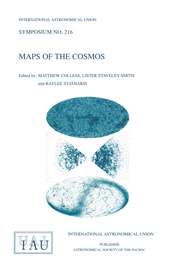Article contents
Galactic Disk Surface Density in the Solar Neighbourhood
Published online by Cambridge University Press: 26 May 2016
Abstract
Using parallaxes and proper motions of a kinematically and spatially unbiased sample of old bright red giant stars from the Hipparcos catalog with measured radial velocities from Barbier-Brossat & Figon (2000), we have re-estimated the surface density of the Galactic disk in the solar neighbourhood within ±0.4 kpc of the Sun. We determine the vertical distribution of the red giants as well as the vertical velocity dispersion of the sample, (14.4±0.26 km/sec), and combine these to derive the surface density of gravitating matter in the Galactic disk. Using these data, we determine the surface density of the galactic disk as a function of the galactic coordinate, z. the surface density of the disk increases from 10.5 ±0.5 M⊙within ±50 pc to 42 ±6 M⊙/pc2 within ±350 pc. The volume density of the galactic disk within ±50 pc is 0.105±0.005 M⊙/pc3, which is only marginally greater (within 2 sigma) than the volume density estimates of observed baryonic matter in the solar neighbourhood.
- Type
- Part 6: The Galaxy
- Information
- Symposium - International Astronomical Union , Volume 220: Dark Matter in Galaxies , 2004 , pp. 201 - 206
- Copyright
- Copyright © Astronomical Society of the Pacific 2004
References
- 1
- Cited by


